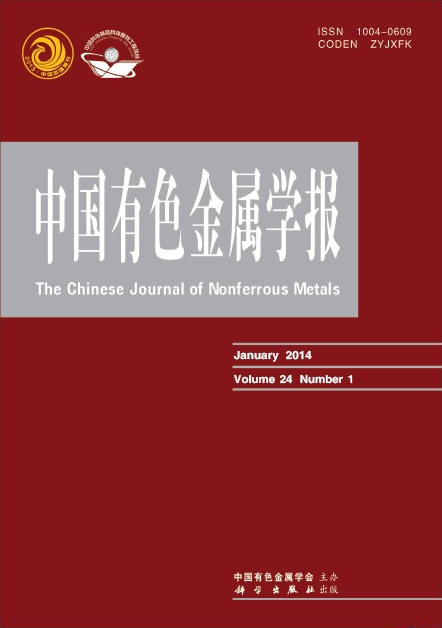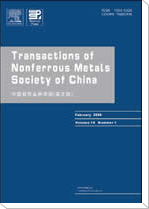(1. 西北工业大学 国家重点凝固实验室,西安 710072;
2. 西部超导材料科技股份有限公司 超导材料国家工程实验室,西安 710018)
摘 要: 采用多层钛网层叠烧结的方法制备多孔钛,通过控制冷压制力控制多孔钛孔隙率,进而控制多孔钛的弹性模量,使多孔钛的弹性模量和骨组织相适配。采用场发射扫描电镜观测多孔钛的微观孔形貌,采用Instron力学试验机测试压缩应力—应变曲线。通过截取应力—应变曲线上的线弹性测得弹性模量,并取σ0.2作为多孔钛的屈服强度。结果表明:采用控制冷压制力在112~225 MPa之间,可以制备出孔隙率为41.02%~58.87%的多孔钛,弹性模量为1.6~5.6 GPa。这种多孔钛在微观结构上显示出纵横向不同的孔形状和孔尺寸,力学性能也因微观结构的差异而显示出各向异性。
关键字: 多孔钛;力学适配;弹性模量;屈服强度;钛网层叠烧结
(1. State Key Laboratory of Solidification Processing, Northwest Polytechnical University, Xi’an 710072, China;
2. National Engineering Laboratory for Superconducting Material,
Western Superconducting Technology Co. Ltd., Xi’an 710018, China)
Abstract:The porous titanium with bone-like structure were designed and fabricated by titanium mesh-stacking-sintering based on the control of elastic modulus. The elastic modulus was controlled by the porosity which was influenced by the cold pressure during the fabrication of porous titanium. The microstructure and mechanical properties of the porous titanium specimen were investigated by scanning electron microscope (SEM) and electrical universal testing machine, respectively. The elastic modulus and yield stress (σ0.2) were calculated from the stress—strain curve. The results show that the elastic modulus changes from 1.6 GPa to 5.6 GPa when the porosity is 41.02%-58.87% by controlling the cold pressure from 112 MPa to 225 MPa. The microstructure shows that the pore has different shapes and sizes at longitudinal section and cross section, which is determined by the porous titanium’s anisotropy of the mechanical properties.
Key words: porous titanium; mechanical adaptation; elastic modulus; yield stress; titanium mesh-stacking-sintering


